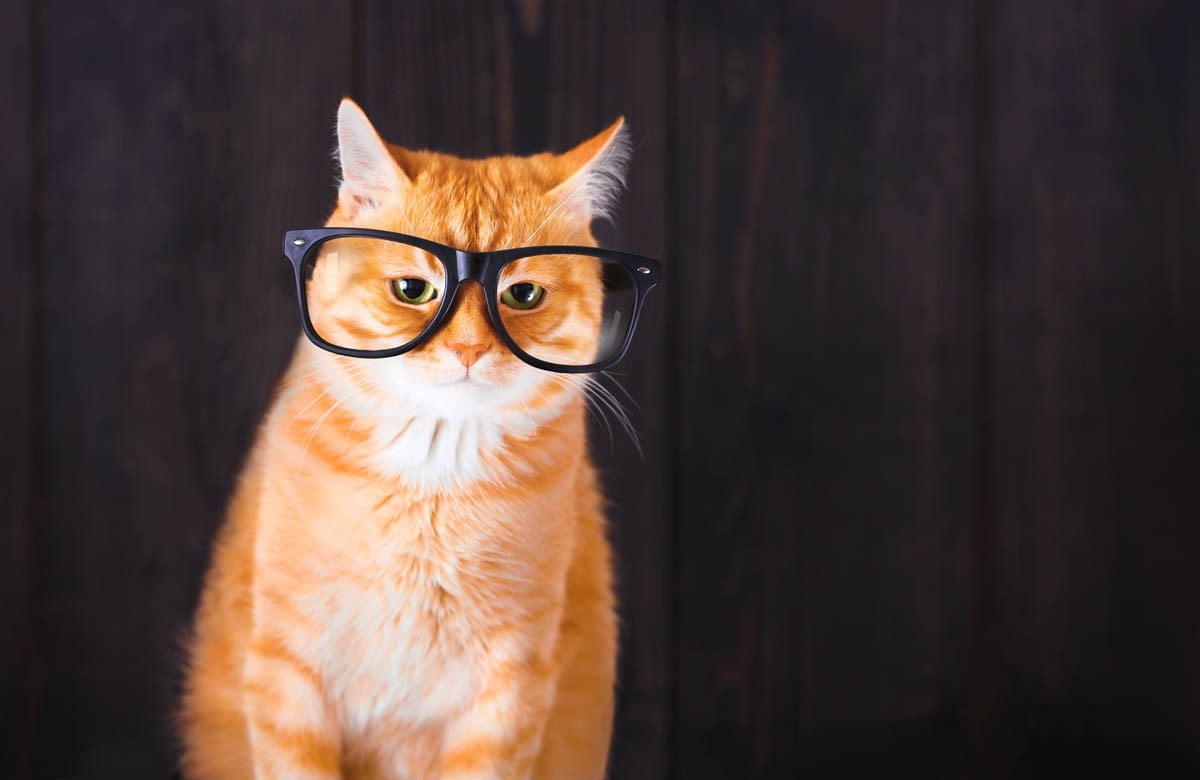What is 20/20 vision and do cats experience a decline in eyesight like humans do?
Visual acuity refers to the clarity of vision, and 20/20 vision means that the test subject can see the same line of letters at 20 feet as a person with normal vision can see at 20 feet. People of all ages (including young children) can have refractive errors, which occur when the eye cannot focus properly, and they will find it hard to see close up (farsighted or hyperopia) or distance (near-sighted or myopia).
One of the most common types of refractive errors occurs as people move into their late 30s and early 40s. Many will notice a decline, usually with their close up vision. They find it hard to read text on their phones, or menus; this type of refractive error means they are farsighted (presbyopia) due to age. The decline in the ability to focus due to age develops because the lens, which sits behind the pupil loses its ability to change shape and properly focus light on the retina located at the back of the eye. Optometrists can correct refractive errors with glasses or contact lenses.
If you have ever seen an optometrist write a script, he or she will use numbers that tell the optical dispenser what strength to supply the lenses (or contacts). The power of the lenses necessary to correct your vision is measured in units called diopters which go up or down units of 0.25. Plano is the fancy term for 0.00, which means there is no refractive error. Most sunglasses off the shelf have plano lenses, and we might order a plano lens for a patient who has recently had cataract surgery on one eye, or somebody who wants to order coloured contact lenses.
This is how a script may look, for the ease of simplicity, I won’t go into astigmatism or axis.
- +2.25 (right eye)
- +2.50 (left eye)
or
- -1.75 (right eye)
- -2.25 (left eye)
The plus is used for people who are farsighted and the minus for people nearsighted.
Do cats develop refractive errors as they age?
There is very little information on refractive errors in cats. One small trial of 98 healthy cats did show refractive errors in cats and kittens. Younger cats had greater negative refractive errors (shortsighted) than adults but generally progressed to emmetropia (normal vision) during adulthood. Most adult cats are neither shortsighted nor farsighted.
How does the cat’s eyesight compare to ours?
Even cats who do have normal vision won’t have 20/20 vision in the way we do. Cats are not small people and their eyes have evolved for hunting in low light.
- Cats have elliptical pupils which can expand considerably to let in more light from dusk to dawn
- A greater number of cones that assist with peripheral and night vision but fewer rods than people means their ability to see colour and fine detail is limited.
- The tapetum lucidum is a layer of reflective tissue which lies directly behind the retina and acts as a mirror to reflect light through the retina. If the light misses a rod, it will reflect off the mirror layer of the tapetum lucidum and be bounced back, which provides the photoreceptor cells with a second opportunity for photon-photoreceptor stimulation, thereby enhancing visual sensitivity at low light levels.
- The cat has a large lens which enables it to gather more light, but the cat’s lens is less able to change shape and focus over different distances than that of the smaller human lens which means that cats cannot see extremely close objects. The small human lens gives us a large depth of focus.
So, no glasses or contact lenses for cats?
While refractive errors are not common in cats, contact lenses do exist for cats with corneal ulcers. The contact lens (known as a bandage contact lens) goes over the cornea to relieve pain and allow the cornea to heal.
Vision loss in older cats
While refractive errors aren’t an issue in cats, vision problems can develop. The most common cause of vision loss is due to cataracts which occur when the normally transparent lens of the eye becomes opaque, which reduces the amount of light that reaches the retina. Cats of any age can develop a cataract, but they are most common in middle-aged to senior cats. Surgery may be recommended to replace the lens and replace it with an intraocular lens.
Where surgery isn’t an option (due to the age of the cat, financial reasons) conservative management can include restricting the cat inside and maintaining a normal routine which includes avoiding moving things around. Cats adapt well to vision impairment.
Retinal detachment (RD) is a common, severe and sight-threatening disorder that occurs when the retina lifts or pulls away from the underlying retinal pigment epithelium due to a tear in the retina. This allows vitreous, a gel-like substance that gives the eye its shape to leak through the tear which causes the retina to separate from the underlying tissue. High blood pressure (often a side-effect of chronic kidney disease), hyperviscosity syndrome, glaucoma, advanced diabetes and trauma can all lead to a retinal detachment.

